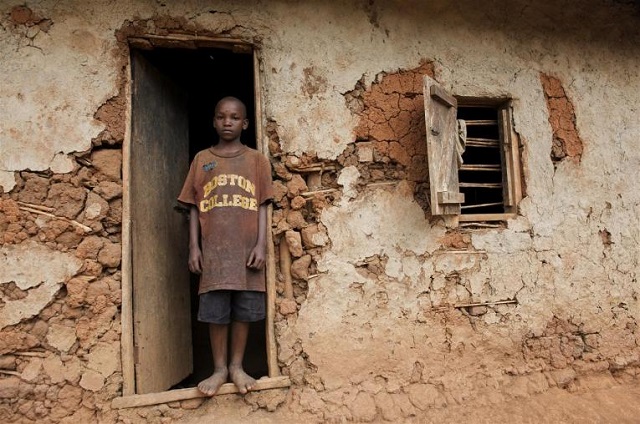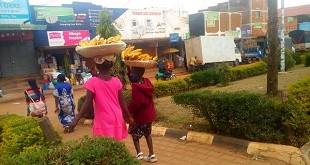
Why the citizens need a mind shift to deal with multidimensional poverty and persistent inequality
COMMENT | JOHN DDUMBA-SSENTAMU | Uganda aspires to become an upper-middle-income country by 2040. This is classified by the World Bank as a country with Gross National Income per capita income above $4,096. That’s far and above Uganda’s latest figure of under $1,000.
The main pillar of Uganda’s push is Vision 2040. This is a strategic document drawn up in 2007. Its aim was to formalise Uganda’s aspiration to have a transformed Ugandan society “from a peasant to a modern and prosperous country in 30 years”.
The government also prioritised poverty eradication action plans between 1997-2007. And since 2010, the National Planning Authority has developed five-year plans.
Yet all is still not well with Uganda’s economy. Inequality and multidimensional poverty remain prevalent. The Gini coefficient – the measure of the degree of income inequality – has remained largely constant since 1996. The situation has worsened with the COVID-19 pandemic.
Uganda’s inequality has been aggravated by uneven land distribution and the complex land tenure system. Other factors are household sizes, disparities in access to education, inequalities in employment opportunities, urbanisation and generational poverty. All hinder equitable access and resource distribution.
On top of this, Uganda’s government debt levels have risen so high as to alarm multilateral lending institutions.
This is the backdrop against which I chaired a committee of economic experts convened to examine the current approach to the financing of development. After reviewing the scientific evidence we recommended the way forward.
In short, we underlined the view that at the core of any sustainable development agenda is the nation’s collective mindset. When citizens feel that they own the development agenda and process, they become active participants in development. That’s currently lacking.
Government must encourage citizens to participate in the development. It must start by viewing citizens as agents of economic growth and development, not a burden to the government. Citizen involvement and participation in the development process will translate into country ownership. Greater country ownership will, in turn, advance the country’s national development agenda.
Collective mindset
Historically, top-down solutions have dominated debate over sustainable development in Uganda. Multilateral aid, poverty reduction plans and economic stimulus packages are just some examples.
One of the more underappreciated aspects of any sustainable development agenda is the nation’s collective mindset. It’s individuals, communities, and institutions who build the necessary confidence to pursue complex and challenging solutions to their problems.
Another pressing concern that underpins the challenge of implementation is the approach to financing sustainable development. The current approach is to use public and private sector resources to improve development indicators.
But there is little focus on how leaders use these resources to shift the mindset of citizens towards their greater ownership of the development process. The report defines ownership as: “leadership and participation, at all levels and in every sector of society to achieve a unified goal, in which individuals feel part of a common development agenda”.
Our committee identified Uganda’s four main challenges. These are:
- a focus on improving development indicators to the exclusion of mindset shifts that promote greater ownership of the national development agenda;
- a lack of clarity on how to balance broader inclusion of stakeholders with competence and expertise in financial decision-making;
- stricter oversight of public institutions as a means of building trust not having the desired effect; and
- the stifling of financial and overall innovation by current socio-economic-political conditions.
Our report concluded that inclusive growth approaches should be at the forefront to increase economic growth rate and reduce inequality. Specifically, Uganda’s current monetary and fiscal policies need to be revised to meet the needs of various groups of people.
This calls for investment in the mechanisms that provide opportunities for citizens to achieve their development aspirations. These include expanding financial inclusion – the availability and equality of opportunities to access financial services. In addition, Uganda must invest in citizen level monitoring of development initiatives. The government must also actively address negative perceptions of taxation.
There is evidence of government encouraging citizen level monitoring of government services. And the Uganda Revenue Authority has taxpayer associations. But these efforts have thus far yielded limited results.
Towards sustainable development
Our study argues that certain conditions must be met before investments can become self-sustainable. Competitive advantage and the various ways a country creates, uses, and enhances its advantages, are critical to unleashing a self-sustaining condition of development.
Uganda is far from being self-sustainable in economic development. It continues to be heavily reliant on foreign aid. The country received $2.1 billion in 2019, representing almost 43% of its government expenditures. This continues to grow.
There are signs that Uganda’s nascent industrial sector may be on the verge of a breakthrough in growth. But the country’s overall business competitiveness and the education system seem to be major restraints in seeing a more profound structural transformation. These stand in the way of Uganda’s ability to get to a self-sustaining condition of development.
To achieve this outcome, Uganda must address three key issues.
First, enhance the impact of domestic resources while making the economic environment more favourable to local industry.
Second, enhance the value of locally collected taxes on the development mindsets of citizens.
Third, expand access to finances at lower interest rates. This would give more citizens the perceived freedom to pursue their development aspirations.
Conclusion
Economic growth is essential but improving the wellbeing of the entire population cannot be overstated. This ensures that all citizens gain equally from the benefits of growth and development. This is particularly true for poor and vulnerable groups.
Inclusive growth facilitates equitable access to economic opportunities. It provides equal access to vital services such as education and health. It also empowers the population through financial resources and skills development.
There have been substantial efforts by government to expand the impact of the industrial and manufacturing sectors. But they have seen limited growth. In part, this reflects the lack of coherence in trade, technology and industrialisation policies.
The government often quite visibly courts foreign direct investment. At the same time it implements nationalistic policies. One example is Buy Uganda Build Uganda (BUBU). Each policy approach comes with potential benefits and drawbacks. But together, they create an environment of inconsistency and limit either’s potential benefits.
Inequality impedes sustainable socio-economic growth and development. And it hinders the majority of the population from participating in income-generating ventures. Persistent inequality also creates a fertile ground for political instability. This, in turn, is a threat to sustainable development.
****
John Ddumba-Ssentamu is Professor of Economics, Makerere University
 The Independent Uganda: You get the Truth we Pay the Price
The Independent Uganda: You get the Truth we Pay the Price



